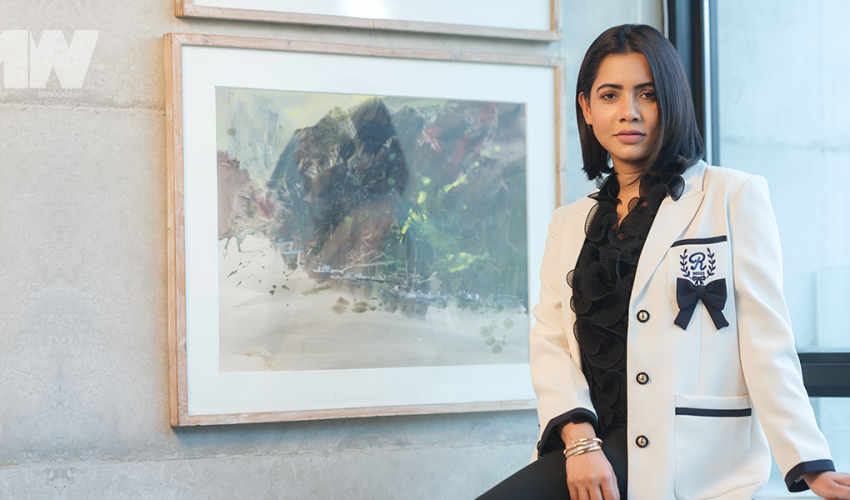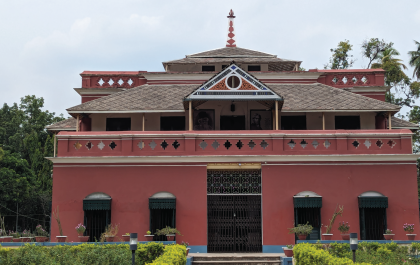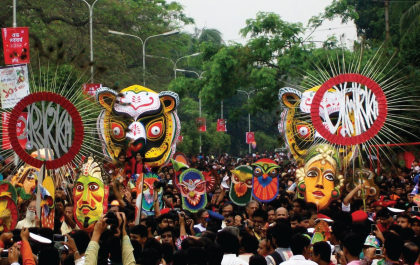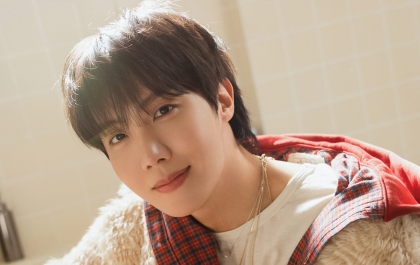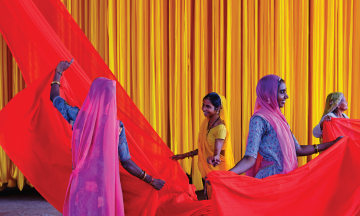Zannat Jui’s Commitment to Eco-Friendly Architecture
Anika Chowdhury
In the field of architecture, a remarkable shift is taking place, with sustainability at its core. Leading this transformation are numerous women architects who are not just designing buildings but are also shaping the future of our country. Among them, Zannat Jui, the Head of Design at SHATOTTO Architecture for Green Living, is leading the way forward in the field of sustainable and green architecture.
With a Master’s degree in Sustainable Design from the National University of Singapore and numerous international accolades, Jui combines her deep understanding of sustainable practices with a cultural sensitivity that is particularly poignant in her projects. Her work is characterized by a commitment to respecting and preserving the natural surroundings, ensuring that minimal environmental disruption occurs during construction.
MWB made a visit to SHATOTTO’s office to discuss the evolving landscape of sustainable living in Bangladesh with emerging architect Zannat Jui.
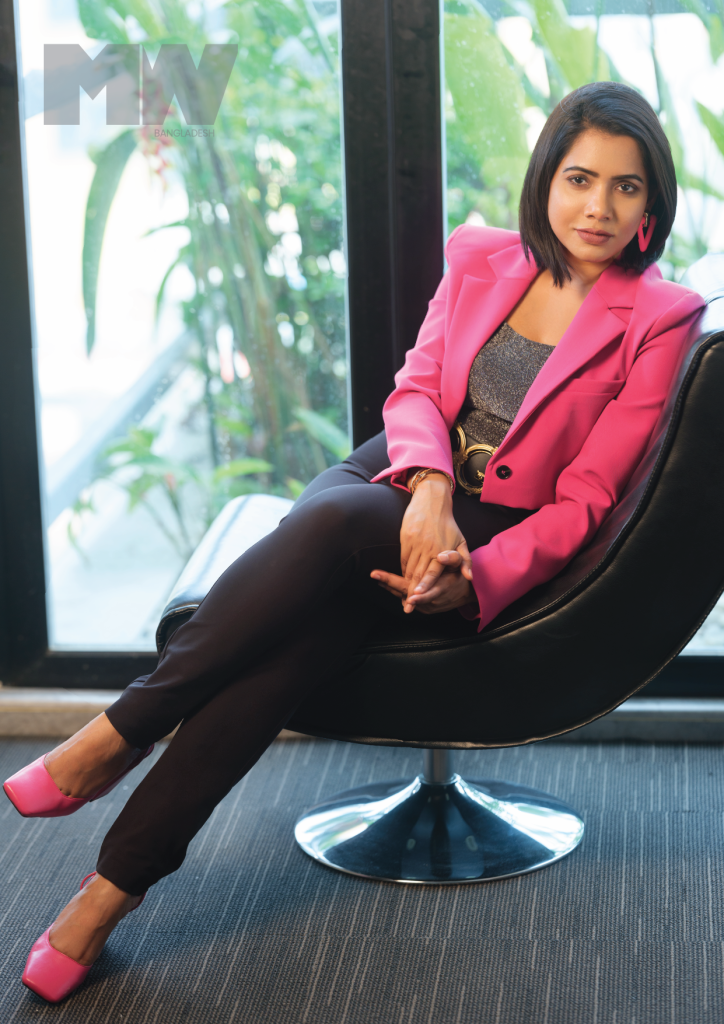
Did you always want to be an architect?
I have wanted to be many things in life and was seeking to do something challenging. Then I figured architecture might be the best fit for me as it requires everything – hard work, creativity, and of course, science. It is not easy to design a building. You have to think about the safety of the residents as well as the environment. The versatility of this field essentially attracted me.
After all these years, I still feel like being an architect is a very challenging job but I am happy to take this challenge. Architecture is much more than buildings; it’s an art form that shapes our experiences and interactions.
Who are some architects you admired as a student?
The work of Louis Kahn has deeply inspired me. His work in Bangladesh, particularly the Jatiya Sangsad Bhaban, is proof of the power of thoughtful architectural design in cultural contexts. I also admire other architects such as Ludwig Mies van der Rohe and Norman Foster.
Among Bangladeshi architects, the works of Rafiq Azam’s colorful and nature-integrated designs and Muzharul Islam’s pioneering modern architecture in Bangladesh stand out. When I was a student, I used to study their work. Marina Tabassum’s work is also worth mentioning as she doing excellent work in this field.
Among the buildings Rafiq Azam has designed, which one do you admire the most?
Rafiq Azam’s SA Residence is one of the buildings I truly admire. Its design, a pure square formed with cast concrete, really resonates with me due to its simplicity and thoughtful integration of traditional Bangladeshi elements like the courtyard, pond, and ghat. What’s particularly striking is how these elements blend urban and rural typologies, which is crucial in a densely populated city like Dhaka.
What is your vision for SHATOTTO Architecture for Green Living?
Rafiq Azam started SHATOTTO with a poetic vision and he has been the pioneer of green architecture in our country. I want to uphold his vision but I also want to carry forward SHATOTTO in a scientific manner. I want our buildings to be self-sufficient and reach the net zero target.
For example, the building should be able to generate electricity for itself, it should be able to recycle the water and regenerate. And when it comes to production, it should have a garden and enough greenery to produce fruits and vegetables. So, this is my vision for SHATOTTO. I hope this organization will be a pioneer for green living.

Architecture has been described as “frozen music.” What genre of music do you think your style would be?
You see architecture has gone through a massive evolution. Once there was the classical era, then came the modern era. But I do not think my work belongs to any era or under any particular category. I have always tried to take inspiration from nature.
I believe our body is self-sufficient and is an integral part of nature. To a great extent, it can function on its own but we should not think it is something superior to nature. I want my buildings to be like that – in essence, human-centric. Instead of stealing from nature, I want my structures to back to nature.
What is your design philosophy?
My design philosophy centres on respecting and preserving nature. When approaching any project, my goal is to integrate the building into the existing landscape with minimal disruption. This means cutting down as few trees as possible and designing in a way that complements and enhances the natural surroundings, rather than imposing on them.
I encourage my clients to consider what they truly need in terms of space, production and even energy – aiming to minimize the building’s footprint. This philosophy not only respects and preserves the natural environment by reducing the number of trees cut down but also promotes a more sustainable way of living. By focusing on necessity rather than excess, we can create spaces that are both functional and harmonious with their surroundings.
What inspires you?
As I have mentioned before, nature inspires me. The people I design the houses for inspire me. Whenever I need any inspiration for my work, I look towards nature. I believe it has everything I need.
Recently, I visited a place in Morocco. In the mountains, people curated small caves to live there. I was truly amazed seeing how people – thousands of years ago – were able to live in this place, without destroying or altering the natural structures. They were able to survive in this extreme weather without harming nature, why can’t we?
You don’t have to be an architect to know Dhaka is not doing well. The entire city has been robbed of its greenery in the name of construction, development, and beautification. Dhaka is becoming unhabitable with time. We may not understand the consequences of our doing but the next generation will bear the brunt of our deeds. Even five years ago, we did not imagine we have to tolerate this much heat that we are facing right now. So, I consider all of these factors when I am designing any building and try to preserve and respect nature as much as possible.
Moreover, I conduct workshops focusing on architecture-ideology, architecture-photography and architecture-anthropology because I think that if you want to understand architecture, you need to know other fields as well.
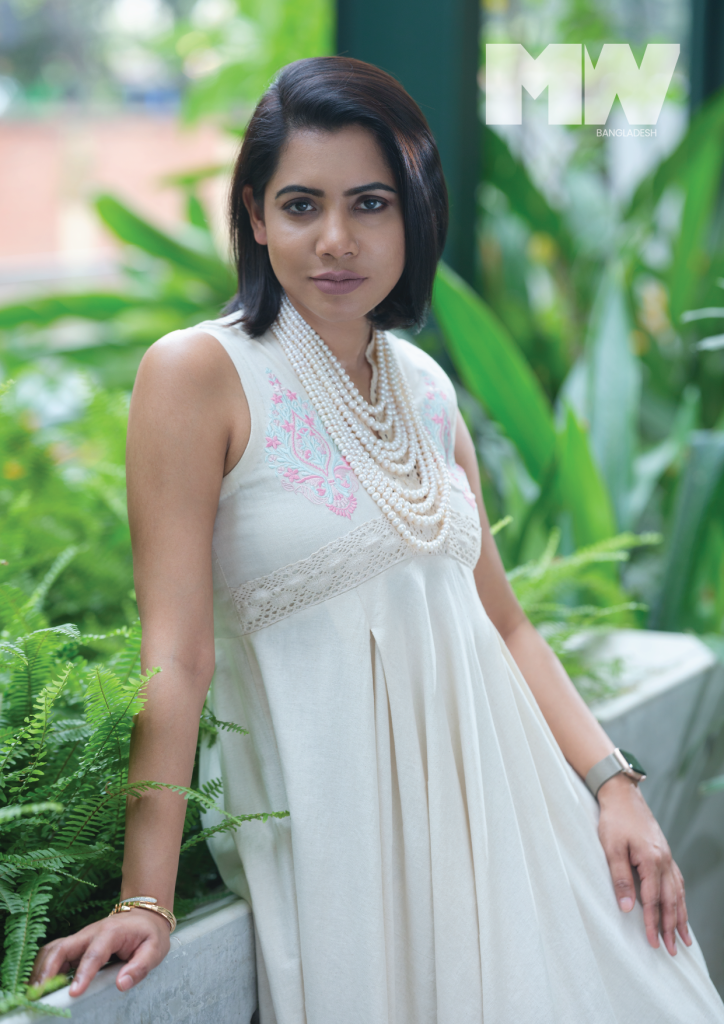
Could you tell us a little bit about your creative process?
I always prioritize reducing construction costs and minimizing environmental impact. I emphasize to my clients that their building projects are not just for their immediate use but also have lasting effects on their neighborhood and future generations. My design process is fundamentally about creating environmentally friendly projects. This approach involves thoughtful planning to use resources efficiently and designing in a way that integrates well with the natural and community environment.
What is a project you’ve worked on that you’re particularly proud of?
I don’t think I am particularly proud of any of my projects. Every building I have worked on is close to my heart. I feel proud when I can build a dream house for my client. I remember one of my clients coming to me and designing a house that resembled the beauty of a poem. She had only a four katha plot and didn’t want something grandiose. I was truly moved by her words and resorted to building the house she wished for.
These stories inspire me and I feel proud when I can build something meaningful.
What challenges you have encountered?
First and foremost, as an architect, we have to listen to our clients’ demands. Sometimes they lose patience, sometimes they want changes in their plans and after completing the designs we have to wait for approval from our clients. Even then, our work may come to a halt if RAJUK does not approve it. So, you see, it is a very lengthy process and we also have to deal with structural engineers, and civil engineers and even after that, there might be some sort of design flaws, and we have to work on that as well.
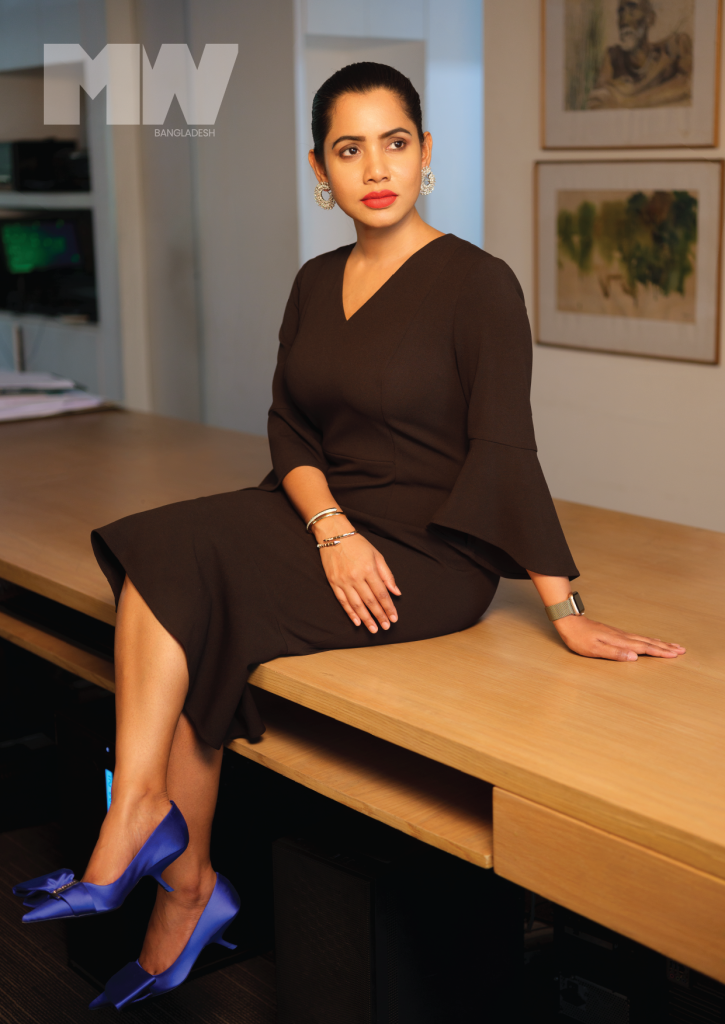
Most importantly, our country is located in earthquake seismic zone 2. So, before everything else, we have to make sure the building is earthquake-resistant and we have to take responsibility if an accident happens. That said, thankfully, I have been able to tackle every challenge I faced so far.
You’re also known for your passion for photography. Tell us a little bit about that.
I studied at Pathshala South Asian Media Institute, and back then, I was passionate about portrait photography. Then I switched to street photography. I remember in one place it was about minus 6 degrees Celsius. I had to remove my gloves to click the photo and I was freezing. At one point, there was blood coming out of my nose. So, it was honestly a physically straining job but I love doing it. I was planning to publish a book on my photography; however, I have not been able to manage the time to do so. Still, I wish to organize an exhibition and publish a book soon.
What is your idea for the future of sustainable architecture in Bangladesh?
I think we need to switch from “egoistic designs” to eco-friendly designs if we want to build a sustainable Bangladesh. We need to think about the environment first. Many people know our country by Jatiya Sangsad Bhaban designed by Louis Kahn. I want more of such landmarks in our country.
Our country shouldn’t strive to build more grandiose and massive structures. It is high time for us to be sensitive towards nature instead of destroying it in the name of development.
What advice would you give to young architects who are passionate about sustainable design but face constraints in resources or opportunities?
I wouldn’t say we have a lack of resources or opportunities. I think we need to use the resources we already have in our country. I don’t think we need to imitate other developed countries. Rather, we need to think about ecological structure first and how we can preserve it through structural urban planning. Young architects should keep this in mind and use what nature is offering us. What we have right now is plenty to sustain us, all we need is proper utilization.
Are there any upcoming projects or initiatives you are particularly excited about?
Every project of mine is like a child to me and it takes a long time for me to complete one structure. So, whether it is a big or small project, I always remain excited no matter how simple the project is. And I think this is the bliss of being an architect.




